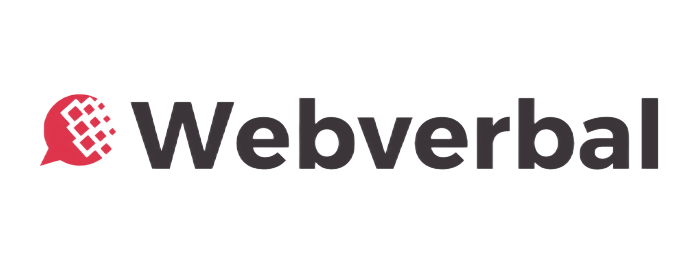Table Of Content
- Why I Did This Experiment
- Why LinkedIn Felt Right
- The Rules I Set for Myself
- What I Posted About
- The Emotional Rollercoaster
- The Numbers: What Actually Happened
- What I Learned
- Authenticity Wins
- Consistency Matters
- Comments Are Gold
- The Indian Audience Values Practical Wisdom
- LinkedIn Isn’t Just Marketing — It’s Self-Discovery
- Tools I Found Useful
- My Advice to Founders & Creators
- PS
- FAQs
- How do I grow on LinkedIn in India?
- Should founders post daily on LinkedIn?
- What tools help manage LinkedIn content?
- How do I build a personal brand on LinkedIn?
“Margins and metrics aside, sometimes the real profit is finding your own voice.”
On 1st April, I opened LinkedIn and stared at the blinking cursor.
My palms were sweaty.
This might sound dramatic. After all, I’m someone who has pitched multi-crore business plans, managed investor decks, and sat through high-stakes negotiations at Tata AIA and as the founder of Classystreet.
Yet writing a personal post on LinkedIn — in my own voice, about my own thoughts — felt terrifying.
Why I Did This Experiment

That day, I decided I’d post on LinkedIn every day for 30 days. Not for followers. Not for vanity metrics. Instead, I wanted to find my own voice again.
Somewhere between corporate presentations, pitch decks, and trying to keep an e-commerce business alive, my voice had grown quiet.
I’ve spent 12 years in the corporate world and another 11 running my own e-commerce venture. In between, I started building Mybrandpitch — my biggest dream yet.
Despite those years of experience, my thoughts mostly stayed locked inside my mind.
I’d share them with close friends or colleagues who’d often say, “You should write about this, Debansh.” But I never did.
I told myself I didn’t have time. Or that my thoughts weren’t “good enough.” Or that people might judge me.
One morning during meditation, a question hit me sharply:
What’s the point of living through all these experiences if I don’t share them?
Why LinkedIn Felt Right
LinkedIn felt like the right place for this experiment.
It’s where founders, entrepreneurs, and professionals gather. It’s a platform that — at least in theory — values substance over fluff.
So I made a quiet promise to myself:
“Thirty days. One post every day. No filters. No pretending.”
The Rules I Set for Myself
I’m the kind of person who needs rules to stay disciplined. So I made a few simple rules for this challenge:
- Post daily (or as close as possible)
- Write in my natural voice — no corporate jargon
- Share honest stories, even if they felt vulnerable
- Avoid posting purely for engagement hacks
- Keep my posts relevant for entrepreneurs, founders, and creators
What I Posted About
I didn’t follow a strict content plan. Instead, I wrote about what was genuinely on my mind each day.
Some topics I covered included:
- The loneliness of being a founder
- The emotional cost of running Classystreet
- Small moments of doubt and hope
- Reflections on India’s startup ecosystem
- Tools I discovered that saved my sanity
- Contrarian opinions about hustle culture
- Lessons from failures people don’t talk about
One post that surprisingly connected with people was about sitting on ₹18 lakh worth of unsold sarees in my warehouse.
Another story was about how my wife once asked why I seemed “angry at my phone.” That post resonated with founders struggling to balance business and family life.
The Emotional Rollercoaster
Here’s what I didn’t expect:
Posting publicly felt like standing naked in a crowded room.
Every time I hit “Post,” I felt a rush of fear.
- Will people judge me?
- Will they laugh at my writing?
- What if nobody responds?
One night, I drafted a post about founder loneliness. I nearly deleted it three times before finally publishing it.
And yet…
That post brought me the kindest DMs from strangers who said:
“I thought I was the only one who felt this way.”
That’s when I realized writing publicly is as much therapy as marketing.
It forced me to clarify my thoughts. I started to see patterns in my own life that I’d never noticed before.
By Day 15, I was looking forward to writing each post.
It became my evening ritual. A conversation with myself — and with the world.
The Numbers: What Actually Happened
Let’s talk numbers.
While I wasn’t chasing virality, I was curious to see what might happen.
Here’s how it went after 30 days:
- Impressions: ~28,000 (not huge, but deeply engaged)
- Follower growth: +420
- Comments and DMs from people I’d never met
- Highest-performing post: My story about founder loneliness (5,800 impressions, 42 comments, countless private DMs)
Some surprises:
- Short, personal stories outperformed “tips & tricks” posts.
- Vulnerable posts drew more engagement than polished business insights.
- Posts with an Indian context (like artisan stories or e-commerce realities) resonated deeply with Indian professionals.
- LinkedIn’s algorithm definitely favors consistency — posting daily boosted my reach noticeably.
What I Learned
Thirty days taught me more than any marketing blog ever could.
Authenticity Wins
People can sense pretense from a mile away.
The posts that felt raw and human performed better than polished “professional” content.
Consistency Matters
Even when my writing wasn’t perfect, showing up daily kept my profile visible in people’s feeds.
Comments Are Gold
The real magic lies in conversations. Comments often led to deeper connections and even business discussions.
The Indian Audience Values Practical Wisdom
Indian professionals appreciate insights grounded in real-life experience — not just theories.
LinkedIn Isn’t Just Marketing — It’s Self-Discovery
I didn’t just grow a following. I rediscovered my own voice.
I remembered why sharing stories matters to me beyond business metrics.
Tools I Found Useful
As someone who loves experimenting with tools, here’s what helped me survive the 30-day challenge:
- Notion — For jotting down post ideas
- Grammarly — For cleaning up typos
- Shield Analytics — For tracking post performance over time
- Buffer — For scheduling posts when I knew I’d be busy
- Good old LinkedIn App — Some of my best posts were typed at midnight directly in the app
Truth be told, you don’t need fancy tools. You need courage — and consistency.
My Advice to Founders & Creators
If you’re wondering whether you should start posting on LinkedIn: Start.
Don’t wait until your brand feels perfect. Don’t wait until you have a polished content calendar.
Start as your real self.
Some posts will flop. A few will connect deeply. But you’ll discover parts of your voice you didn’t know existed.
And one day, a stranger might DM you to say:
“Your words made me feel less alone.”
And that’s worth more than any algorithm boost.
PS
If you’ve been posting on LinkedIn — or are thinking about starting — I’d love to hear your story. Drop me a message or leave a comment.
Let’s make LinkedIn less about noise — and more about genuine human connection.
— Debansh
FAQs
How do I grow on LinkedIn in India?
- Post consistently
- Share personal stories that include professional insights
- Engage meaningfully in comments
- Focus on adding value for your audience
Should founders post daily on LinkedIn?
Not mandatory — but posting regularly keeps you visible and builds trust. Daily posts help refine your voice faster.
What tools help manage LinkedIn content?
- Notion for writing drafts
- Buffer or Publer for scheduling posts
- Shield Analytics for performance insights
- Grammarly for clean writing
How do I build a personal brand on LinkedIn?
- Be real
- Share authentic experiences
- Avoid trying to please everyone
- Consistency and authenticity win over perfection




